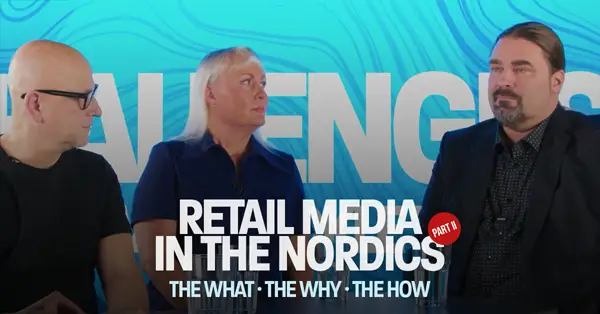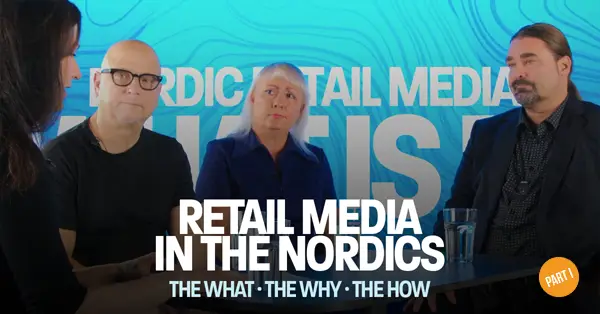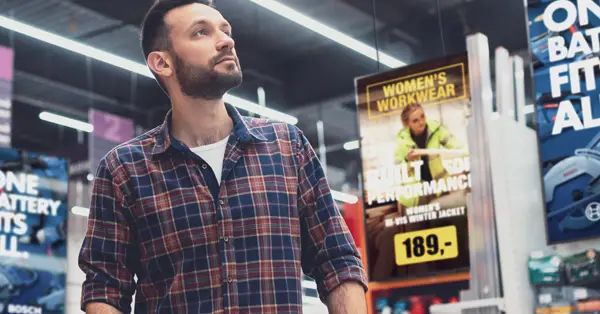Multisensory marketing works
The principle of multisensory marketing is understandable even with common sense: the more enjoyable an experience can be offered to the customer, the more likely they are to spend their time and money. And when the experience can be associated with a specific product or brand, it can also influence purchasing behavior.
There has been a lot of research and scientific evidence on the influence of senses on purchasing behavior and brand building, which many marketing pioneers have turned into practical applications. One of the most well-known is Martin Lindström, who suggests that the core of sensory marketing is to utilize multiple senses simultaneously – the more points accumulated, the better the chances for the marketer to produce the desired impact.

Visual marketing creates meaningful connections between the brand and the world around us. Moving images in the purchasing environment capture attention most effectively. Optimizing lighting can also be part of brand visibility planning.
By incorporating sound, immersion is deepened, and atmosphere is created. The role of music in stores has been found to be most effective when calming – and when the customer experiences the atmosphere as pleasant, they generally spend more time in the store. Usually, the value of the shopping cart also increases.
Scents create powerful stimuli. We have found with our customers that, for example, by using scents at the entrance to the store, sales of scent-marketed product categories can be significantly increased – even by several tens of percent.
By combining tastes through multisensory marketing, for example, in the form of tastings, and the sense of touch, perhaps through skillful package design, excellent results can be achieved.
Practical solutions for sensory marketing
How is the science and theory of sensory marketing applied to practical applications? I'll give you a few examples from our work. We use the term Multisensory Hub for our own solutions, the different-sized implementations of which utilize the senses in various ways and meet the needs of different advertisers. The fundamental idea of Multisensory Hubs is that the advertised brand can be easily replaced with another with little effort.
The most compact solution is a model placed in small spaces, where a combination of light, image, sound, and scent is used to attract the consumer's attention. Such a portable implementation is suitable, for example, for ordinary store shelves or checkout lines.

A slightly larger Multisensory Hub fits, for example, into the entrance of a supermarket for store tours. By offering tastings and creating a strong sensory impact for, say, presenting a new product, a strong memory trace is created, which lasts throughout the store tour and can be further reminded by store advertising.
As the size of the sensory hub increases, the visibility and possibilities of affecting all senses also increase.

A retail chain can build, for example, permanent promo points at the ends of shelves, where changing brands can comprehensively present their product and the desired experiential world for it. If necessary, the promo point can also be easily moved, freeing up placement in the store.

Experientiality and sensory impact can also involve larger spatial entities, such as a brand's flagship store or an exhibition space built around a content theme. Such solutions are always projects where together with customers, a suitable overall solution is planned for each need.
Thoughts on future development
I believe we have only scratched the surface of what sensory marketing can be. In the future, solutions that are now considered special will become commonplace in normal store use, and we will encounter them routinely in stores. Some aspects of sensory marketing will certainly also be directly combined with the most experiential element of brick-and-mortar retail: skilled and empathetic service.
As encounters with sensory marketing become more common, their designers also learn to implement increasingly experiential campaigns, the execution of which is so subtle that consumers perceive them as an essential part of their shopping experience. When sensory impact is used correctly, the customer experience deepens and diversifies, and the role of brick-and-mortar in omnichannel shopping is further strengthened.
---
We interviewed the storekeeper Markus Ranne of K-Supermarket Hertta at Herttoniemi, Helsinki about results of multisensory marketing. Watch video about his thoughts about the Multisensory Hub and our cooperation.







